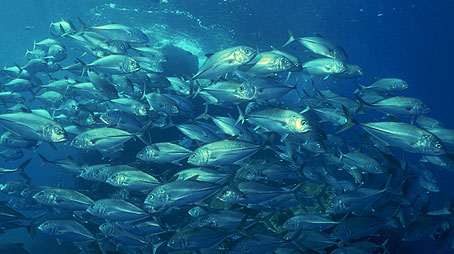

Ecosystems and biodiversity
Biological processes interact strongly with physical and chemical processes to create the environment that keeps Earth habitable for life. The more we examine how the Earth system functions, the greater we realise the role played by life in helping control the system. For example, biological processes contribute significantly to atmospheric carbon dioxide absorption by the oceans, which in turn controls atmospheric carbon dioxide concentration on long time scales.
KEELING CURVES
RUNNING Net Primary Productivity DIAGRAM
About 25% of the carbon fixed by phytoplankton in the upper layers sinks and remains stored away from contact with the atmosphere for hundreds or thousands of years.
Biological pump
This biological pump is a major control on how carbon dioxide moves between the oceans and the atmosphere.
Intriguingly, the nature of the phytoplankton species involved in the biological pump may hold a key to the rate of and potential for carbon storage.
Death and decay
The terrestrial biosphere helps control the atmospheric concentration of carbon dioxide. Plants remove carbon dioxide from the atmosphere and convert it to carbohydrates through photosynthesis. However, plant parts eventually die and decay, are eaten, or burn, all of which lead to the decomposition of the carbohydrates and the return of carbon dioxide to the atmosphere.
Terrestrial cycling of carbon is generally much faster than that of the ocean, and much of the short-term variability in the contemporary carbon dioxide growth rate in the atmosphere is due to variability in terrestrial uptake or loss.
Terrestrial life is an important component in Earth system functioning in other ways. For example, the type of vegetation on land influences the amount of water transpired back to the atmosphere. In addition, plants affect how much radiation from the sun is absorbed or reflected.
Plant root patterns and activity are also important controllers of both carbon and water storage.
Biological diversity
The biological diversity of terrestrial ecosystems affects the magnitude of key ecosystem processes such as productivity, and plays a role in the long-term stability of ecosystem functioning in the face of a changing environment.
